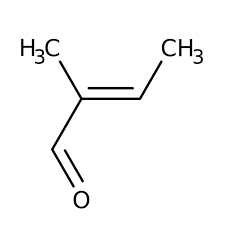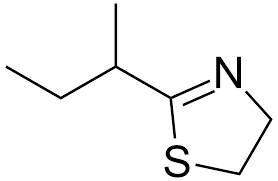pheromones
1/26
There's no tags or description
Looks like no tags are added yet.
Name | Mastery | Learn | Test | Matching | Spaced |
|---|
No study sessions yet.
27 Terms
what is a pheromone?
substances secreted to the outside of an individual and received by a second individual of the same species in which they release a specific reaction, e.g a definite behaviour or developmental process (karlson and luscher 1959)
how do pheromones in silk moths work?
bombykol is a chemical release by female silk moths which acts as a sexual attractant to males
male mothes can detect bombykol from up to 2km away (very powerful)
just 5 bombykol molecules can elicit full mating behvaiour in the male
this shows the extreme sensitivity of the olfactory receptor neurons and the highly tunes behavioural circuitry
how do mammary pheromones in rabbits work?
rabbit mammary pheromone = 2-methylbut-2-enal (2MB2)
female rabbits nurse their young only once a day for 3-5 minutes
this means the pups needs to find the nippls very quickly
nipples produce 2MB2 that triggers innate behvaioural response for stereotyped nipple search
sensed by the main olfactory system

how do sex attractant pheromones in boars work?
androstenol and androstenone are steroid-derived molecules produced by boars
produced in the submaxillary salivary glands so pheromones released into saliva
dispersion in air is aided by foaming which helps pheromones evaporate and travel through the air
females detect these pheromones and elicit sexual receptivity (lordosis)
sensed by the main olfactory system

how do chemical alarm pheromones in mcie work?
2-sec-butyl-4,5-dihydrothiazole is released when mice are stressed or threatened
once other mice detect this pheromone they exhibit freezing behaviour
this is sensed by the grueneberg ganglion

what is a grueneberg ganglion?
specialised olfactory structure in rodents that detects alarm pheromones
located in the tip of the nasal cavity
sends signals to the olfactory bulb which relays info to brain areas controlling fear and defensive behaviours
causes freezing, avoidance and defensive responses
removal of these cells prevents the behavioural response
what are the different chemosensory subsystems in mammals?
main olfactory epithelium
vomeronasal organ
grueneberg ganglion
septal organ of masera

what is the main olfactory epithelium (MOE)?
sensory organ = olfactory epithelium in nasal cavity
function = odour detection
target = main olfactory bulb
what is the vomeronasal organ (VNO)?
sensory organ = vomeronasal organ in nasal septum
function = pheromones, social/sexual signals
target = accessory olfactory bulb
what is the grueneberg ganglion (subsystem)?
sensory organ = tip of nasal cavity
function = alarm pheromones, predator ordours, cold
target = main olfactory bulb (necklace glomeruli)
what is the septal organ of masera?
sensory organ = small patch in nasal septum
function = general odours
target = main olfactory bulb
what are necklace glomeruli?
specialised golmeruli in the main olfactory bulb
receive input from specific sensory neurons (e.g guanylyl cyclase-dependent OSNs and the grueneberg ganglion)
target strcture within the main olfactory bulb that process certain pheromones
what are guanylyl cyclase-dependent OSNs?
typeof olfactory sensory neurons that use guanylyl cyclase signalling instead of the usual cAMP pathway
detects specific cues like alarm pheromones, predator odours and some pheromones
part of the MOE and grueneberg ganglion
what are the three main families of receptors in the VNO?
vomeronasal type 1 receptors (V1R)
vomeronasal type 2 receptors (V2R)
formyl peptide receptors (FPR)

what are V1Rs?
found in upper (apical) layer of VNO sensory epithelium
G-protein coupled receptor to Gαi2 protein
detect small, volatile pheromones
mediate reproductive and social behaviours (mating and aggression)
what are V2Rs?
found in lower (basal) layer of VNO sensory epithelium
G-protein couples receptor to Gαo protein
detect larger, non-volatile peptides and proteins
mediate individual recognition, terrirotial marking and predator cues
what are FPRs?
some vomeronasal neurons express FPRs
detect pathogen and inflammation related molecules
can trigger defensive/avoidance behaviours
what is the flehmen response?
behaviour seen in many mammals characterised by curling of the upper lip, raising of the head and sometimes opening of the mouth
flehmen posture allows muscles of VNO and aossiated blood vessels to expand and contract which creates a uction effect to draw in fluid or air ocntaining pheromones into the VNO
blood vessels around VNO act as a cardiovascular pump as VNO lumen opens and closes
detects sex pheromones to rrrigger mating behaviour and social pheromones
what happens when there is VMO deficits?
TRPC2 knockout = loss of male-male aggression
instead males showed sexual behaviour towards both males and females
females lacking TRPC2 failed to shownormal aggressive resposes toward intruders when nursing
shows that sensory activation of the VNO via TRPC2 is essential for sex discrimination in mice as phermone-based cues are necessary to tell males from females
what are signature mixtures in mouse pheromones?
unique combinations of chemical signals- mainly urinary volatiles and major urinary proteins that allow individual mice to recognise each other
volatile pheromones like 2-sec-butyl-4,5-dihydrothiazole are quickly detected by VMO or MOE
majory urinary proteins are proteins secreted in urine that bind to volatile pheromones
each mouse produces a slightly different mixture of volatiles and MUPs so other mice can tell who it is e.g certain pheromones are sex specific
this allows recognition, identification and communication of social information
what are the key features of MUP and bound ligand complexes>
long-lasting signal as MUP-bound pheromones evaporate slowly
signal individuality = signature mixture
elicit countermarking = maintains territorial boundaries
freshness of marks = ratio of volatile and non-volatile components may indicate how recent thr mark is which allows mice to judge the age of a territory mark
what is ESP1?
exocrine gland-secreting peptide 1
produced in male mouse tear fluid (lacrimal glands)
protein based pheromone (not volatile)
how does ESP1 cause lordosis in female mice?
female mice exposed to ESP1 showed lordosis behaviour even without other cues
demonstartes ESP1 pheromone directly activates females sexual response
detection occurs via VMO through V2Rs
signal sent to accessory bulb then to hypothalamic and limbic areas that control mating behaviour
what are the mechanisms of vomeronasal transduction?
normally a pheronome binds to V1R or V2R receptors in VNO neurons and G-protein signaling activates TRPC2 channels
calcium influx depolarises the neuron and this sends signals to the accesory olfactory bulb
if there is TRPC2 knockout however, there are alternative intraveccular signalling paths
pheromone binds to receptor = G-protein signaling stimulates phospholipase C (PLC) to produce inositol trisphosphate (IP3)
IP3 binds to receptors on ER which releases calcium from intracellular stores to partially depolarise the neuron
this shows not all VMO signaling relies on TRPC2 and how knockout can still show limited pheromone detection
what is the difference between V1R expressing VSNs and OSNs?
VNOs detect pheromones and social chemical cues not general odours and this is responsible for innate behaviours like mating
VSNs can detect very low concentrations of pheromones and this sensitivity is much higher than the MOS which detects general odours at higher concentrations
each V1R expressing neuron is tuned to a very specific, small, volatile pheromone = one neuron to one pheromone to ensure precise detection of social/sexual cues
V2R VSNs and MHC peptide ligands
MHC (major histocompatibility complex) molecules are involved in human system function
peptides derived from the MHC are released in body fluids like urine
V2R VSNs detect peptide based cues, particularly MHCs to enable genetic and social discrimination
do human sexual attractant phermones exist?
human sense of smell has declined as visual and verbal communication have become more important
human behaviour is so complex that it is difficult to identify definite responses
but individuals do have a personal odour that is likely to vary with hormone levels and that can be learnt
no good scientific basis for sex attractant pheromones in humans.